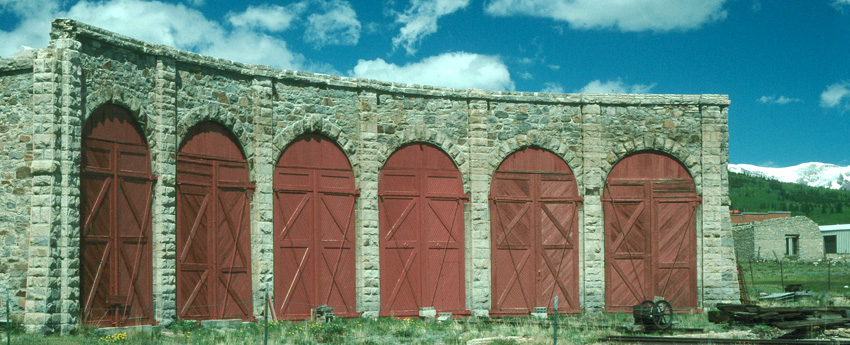
|
|
|
|
This striking building presents an unusual use of stone as a building material. It's a railroad roundhouse in the small town of Como, at an elevation of about 9800 feet in the Colorado Rockies. As the image below shows, a roundhouse is a round structure built around a turntable of railroad track, and it has bays to house locomotives brought into it via the turntable for maintenance and repairs.
|
|
|
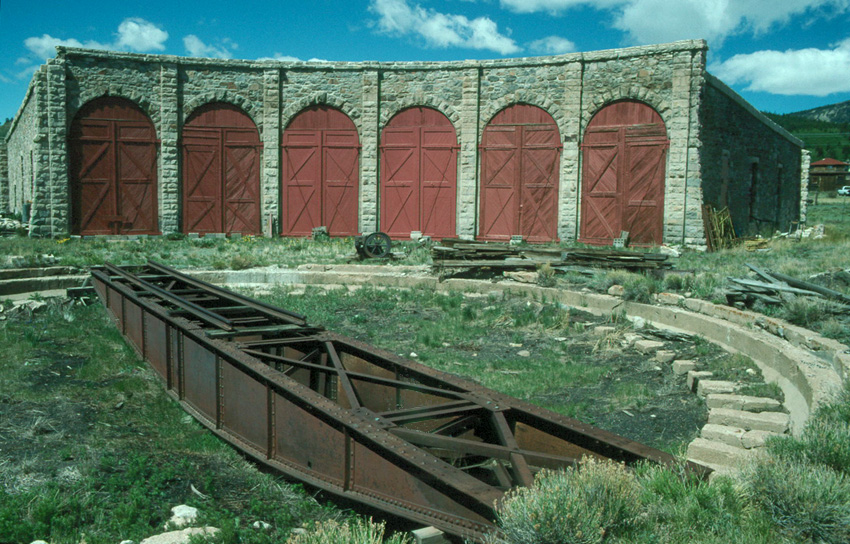
|
|
|
|
What's shown above is about one fifth of a full roundhouse. It was built in 1881 by Italian stonemasons who may have given Como its name. They worked for the Denver, South Park, and Pacific Railroad, which had tracks leading to Boreas Pass over the Continental Divide, just to the north. In the 1890s, when the roundhouse and railroad were owned by the Colorado and Southern, wooden bays were added to bring the total number of bays to nineteen. Here's a picture from 1885:
|
|
|
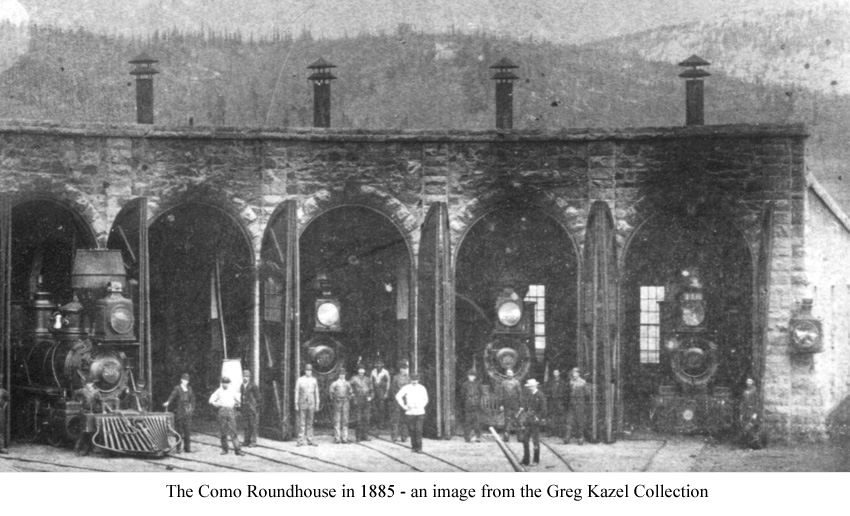
|
|
|
|
Development continued until 1910, when a major tunnel served by the Colorado and Southern collapsed. The importance of Como and its roundhouse immediately plummeted. All but three of the wooden bays were taken down in about 1918, and those three bays burned in 1935, leaving only the original stone structure that survives today. The tracks through Como were pulled up in 1938, and the stone building went on to use as a warehouse, sawmill, and barn. Its fortunes improved in 1983 when, at the age of 102 years, it was registered as a national historic site. It was purchased by William Kazel in 1984, and restoration began in 1985.
|
|
|

|
|
|
|
As the image above shows, the stonework of the roundhouse is of two types. The interior semicircle facing the turntable consists of cut sandstone forming the arches and apparent pillars that give the building its charm. Much of that is a coarse-grained sandstone, as shown below:
|
|
|
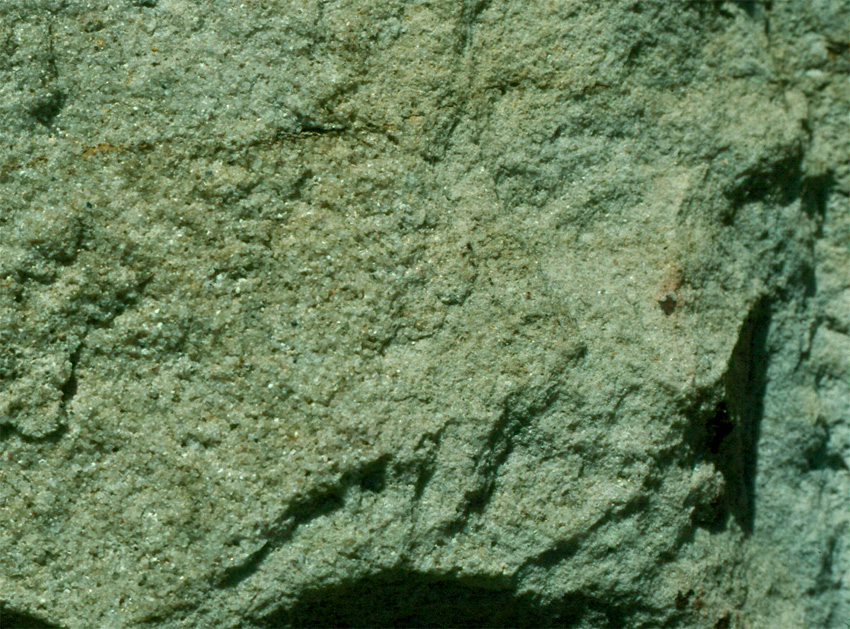
|
|
|
|
On the other hand, the side and outer or back walls consist of unshaped stones, as seen below. Most of it is sandstone, with a few pieces of andesite, as at the upper left of this image.
|
|
|
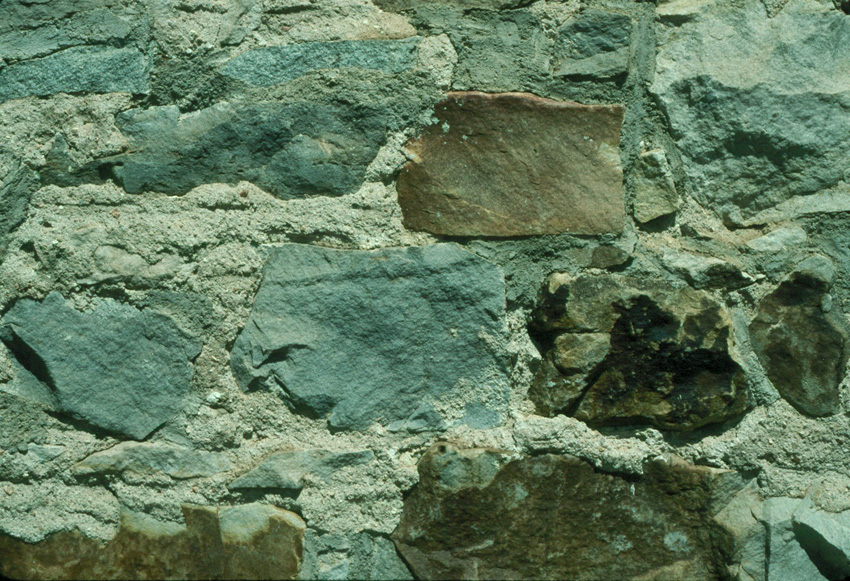
|
|
|
|
To anyone going from Como to Boreas Pass on the old railroad grade, now a bike trail and road, the origin of the andesite is easy to understand: the route climbs for miles through andesite to Boreas Pass. To appreciate the source of the sandstone, one has to head north out of Como toward Boreas Pass but veer left at Tarryall Creek, where a slope of sandstone talus can be found along North Tarryall Creek. The Como Roundhouse was thus the product of local geography, at a strategic location below Boreas Pass, and local geology, with its local stone, and the hard work of stone masons from Italy who left behind a charming building and the name of Como.
|
|
|
|
|
| -------------------------
Acknowledgements: Much of the historical information above is from informative displays outside the Como Roundhouse and from webpages maintained by The Narrow Gauge Circle. Mr. Greg Kazel kindly gave permission to use the historical photograph above; more of his photographs can be seen at The Narrow Gauge Circle. Work on the roundhouse continues, and as of June 2005 contributions could be sent to Como Roundhouse Preservation Inc., P.O. Box 37, Como, Colorado 80432.
|
.





